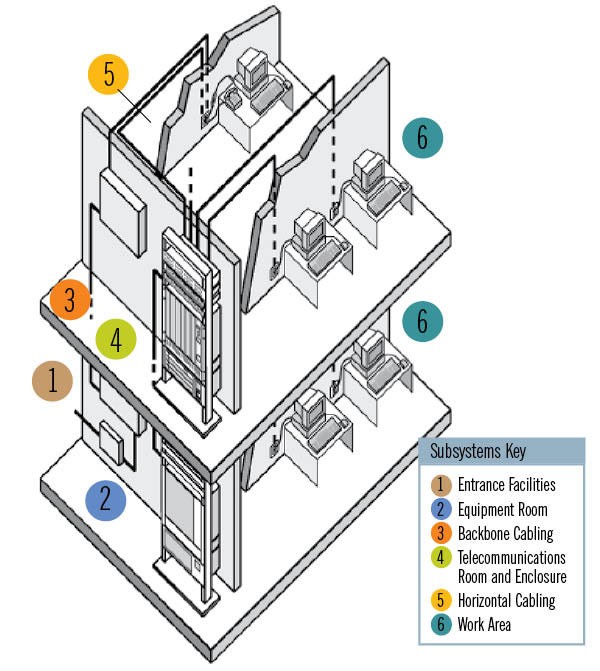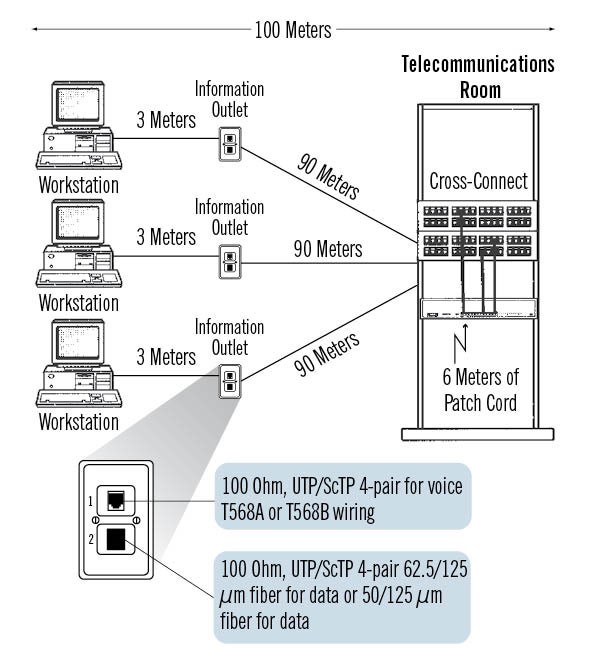Are you curious to know the six subsystems of a structured a cabling system? Well, the most efficient way to organize your company’s network wiring and equipment is to use a structured cabling system. It’s organized and intended to meet your current and future needs, and it works so effectively because it is made up of smaller components known as “subsystems.” These six smaller subsystems all work together to form a single business infrastructure.
The structured cabling system would not function without one of these subsystems. They’re all important in ensuring that your business network runs at top performance and efficiency.
Six Subsystems Of A Structured Cabling System
Structured cabling is a sort of infrastructure installed inside a building to support an organization’s cabling system or network. It links all communication systems, including computers, phones, and other devices, into a single, dependable, flexible, and cost-effective solution that fulfills communication requirements.
Here are the six subsystems of structured cabling and how they might help your company.
Entrance Facilities
In a structured cabling system, an entrance facility denotes the point at which the telecom company’s wire finishes and your company begins.
The telecoms service entrance to the building and backbone pathways between buildings make up the entrance facilities. The cables, network demarcation points, connecting hardware, protection devices, and other equipment that link to the access provider or private network cabling are included in this section.
Equipment Room
The entry cabling links to the internal building wiring infrastructure in the equipment room. Patch panels for backbone cabling, horizontal cabling, and intermediate cabling are located here. Because this room may also hold network switches, PBXs, servers, and other devices, it should be climate-controlled to guarantee that temperature and relative humidity meet the equipment vendor’s requirements.
Backbone Cabling
Backbone cabling, also known as riser cabling, connects EF, telecommunications, other ERs, and carrier spaces and is often installed in vertical channels, or risers, connecting to each floor. Backbone cabling is divided into two subsystems. The actual wires that travel throughout the system make up backbone cabling. It’s commonly a twisted-pair or fiber optic cable throughout the building. The backbone cabling, access provider points, and entrance facilities are located between an equipment room and a telecommunications closet.
Backbone cabling is divided into two types:
- Between horizontal cross-connects and intermediate cross-connects, there is backbone cabling.
- There is cabling between the intermediate cross-connect and the main cross-connect.
As the term implies, this cabling serves as the system’s “backbone,” as the term implies. It connects all of the different subsystems, and all of the cabling for this specific subsystem is governed by the ANSI/TIA-568 regulations.
Telecommunications Room
The termination points for your system’s backbone cable and horizontal cablings, such as fiber jumpers or patch cords, are housed in a telecommunications room (TR) or enclosure (TE).
The difference between a telecommunication enclosure and a telecommunication room is that a telecommunication enclosure serves a smaller area. Each level of a building should also include one telecoms room.
Horizontal Cabling
Horizontal cabling connects the telecommunications room or enclosure to outlets or workspaces on the premises in a structured cabling system. This type of cabling is typically added during the construction of a structure.
Unshielded twisted-pair cable, or UTP, is commonly used for horizontal cabling. Special rules dictate how long the cables should be and where the horizontal cabling should be located to avoid electromagnetic interference. Horizontal cabling is similar to “last mile” cabling that runs from a computer to a workstation.
Work Area
The work area refers to the physical location of an end-equipment user. In the work area, there are workstations with various equipment such as laptops, desktop PCs, or any Wi-Fi-enabled devices that plug into a power socket. Work-area components connect the end-equipment users to the outlets in the horizontal cabling subsystem. The WA is the distance between a connection, or jack, in a wall outlet and a user device connected by a cable. It’s where a structured cable system’s data ends up.
Thanks to structured cabling, the installation of voice and data communications equipment has been substantially simplified. Its ongoing use ensures that it will support future equipment, such as IoT systems, without difficulty.
Conclusion
All six subsystems of a structured cabling system work together to form a single network management solution for your company. You wouldn’t have a network without one of these subsystems. With all of these devices in place, you can be assured that your network’s cabling architecture will provide sufficient coverage and connectivity for all of your employees. Don’t undervalue the importance of well-organized cabling!






